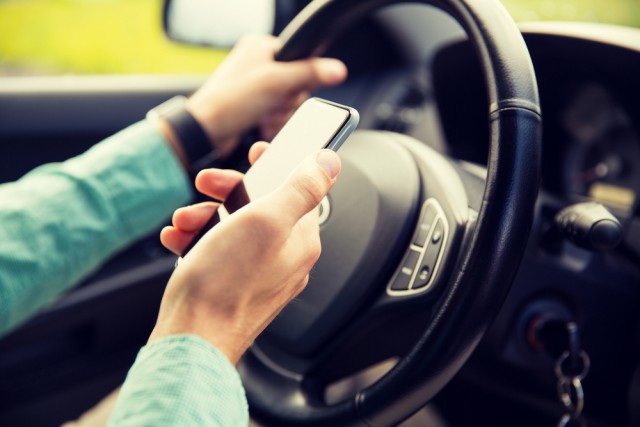NHTSA reveals voluntary guidelines for smartphone makers to minimize distracted driving

Traffic fatalities are up for the first time in 25 years, according to a National Highway Traffic Safety Administration report, and one of the leading causes is distraction. One in ten people die on US roads as a result, and smartphones play a key part in it, so regulators want to do something about it. But, what exactly?
The NHTSA will come up with a set of voluntary guidelines for smartphone manufacturers to limit the level of interaction their users can have while driving a vehicle. "As millions of Americans take to the roads for Thanksgiving gatherings, far too many are put at risk by drivers who are distracted by their cellphones", says US Transportation secretary Anthony Foxx. "These commonsense guidelines, grounded in the best research available, will help designers of mobile devices build products that cut down on distraction on the road".
What the NHTSA wants is to convince manufacturers to design their next operating systems so that they limit the level of functionality that can be accessed and make user interfaces simpler while the user is operating a vehicle. Of course, manufacturers also have to find a way to detect whether the smartphone is used by a driver or a passenger.
"The guidelines encourage manufacturers to implement features such as pairing, where a portable device is linked to a vehicle’s infotainment system, as well as Driver Mode, which is a simplified user interface. Both pairing and Driver Mode will reduce the potential for unsafe driver distraction by limiting the time a driver’s eyes are off the road, while at the same time preserving the full functionality of these devices when they are used at other times", explains the NHTSA.
Some of the things that the NHTSA wants to be restricted include the following:
- Displaying video not related to driving;
- Displaying certain graphical or photographic images;
- Displaying automatically scrolling text;
- Manual text entry for the purpose of text-based messaging, other communication, or internet browsing;
- Displaying text for reading from books, periodical publications, web page content, social media content, text-based advertising and marketing, or text-based messages.
That is the first approach, however, which is meant to be embraced by manufacturers while designing their devices. The NHTSA suggests that manufacturers create a "Driver Mode" for devices that do not meet the guidelines in the first approach from the get-go. That is a special mode that, when enabled, places those very same limitations on the driver's smartphone.
This is a more rudimentary path. The NHTSA recommends that the Driver Mode should activate automatically when the smartphone is not paired with the vehicle's system or, ideally, when the device itself, or in conjunction with the vehicle, determines that it is being used by the driver.
The NHTSA says that it is aware of technologies that can detect whether a smartphone user is driving, but mentions that they are currently being "refined". In practice, what that means is that they may not work accurately every time, and, as a result, may not detect if drivers are using their smartphones.
So, it also suggests a third method of activation for Driver Mode -- the good old fashioned manual way -- at least until the detection technology works more consistently.
In case the device is used by a passenger, there should be no restrictions placed upon the user, as, obviously, they are not involved in driving the vehicle. As you can imagine, it would be really frustrating to see your smartphone placing restrictions on what you can do while you are in the back seat, for instance.
The NHTSA refers to this as the second phase of reducing driving distractions, with the first being the guidelines proposed to car makers, which are advised to design the devices and systems that come with the vehicle so that they keep the driver focused on the road ahead.
Photo Credit: Syda Productions/Shutterstock